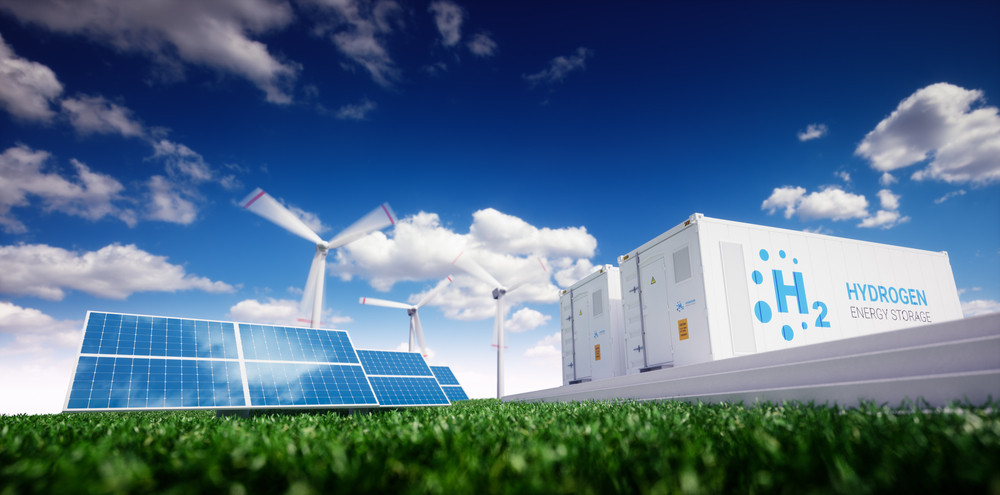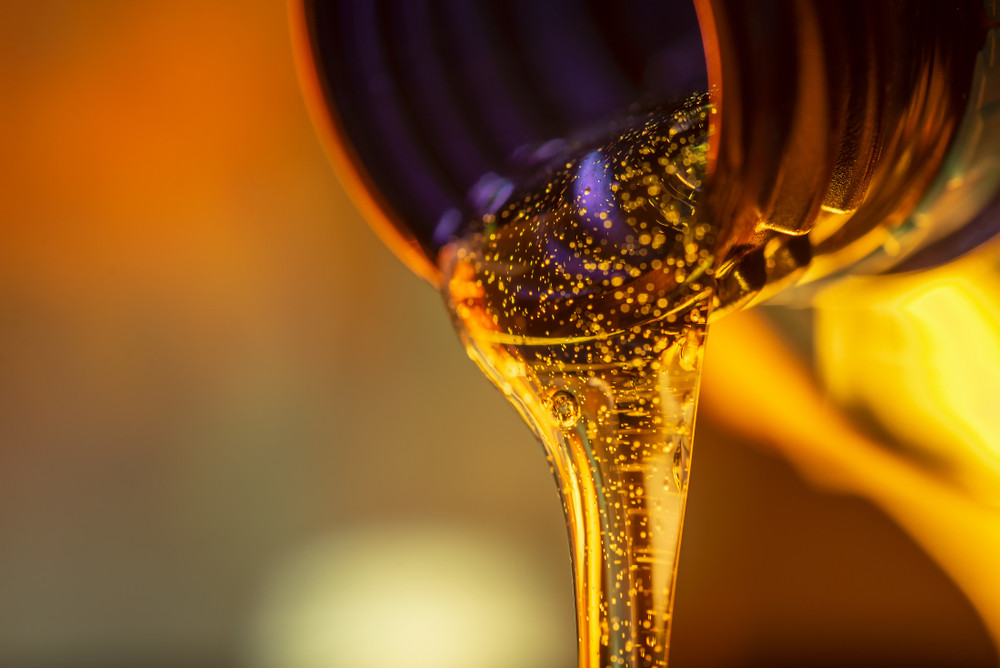New Holland T5.140 Auto Command™
The H2 Dual Power is based on the renowned New Holland T5.140 Auto Command™ tractor, a model developed for a whole range of agricultural applications from field, loader and yard work through to high-speed transport. With CVT transmission, the tractor is also a perfect all-rounder in urban areas and public green spaces.
The tractor is built in Italy but converted to dual fuel here in the Netherlands. This involves mixing hydrogen into the already highly economical Stage V diesel engine.
The hydrogen is stored in 5 cylinders, which are placed above the tractor cab for increased safety without compromising functionality. Each cylinder contains 11.5kg of hydrogen pressurised at 350 bar.
Economical Stage V diesel engine
The H2 Dual Power has the highly economical Stage V diesel engine of the T5 Auto Command™. Hydrogen is directly mixed in with the diesel in the diesel engine. Burning hydrogen instead of diesel dramatically reduces emissions. CO2 emissions fall in proportion to the amount of hydrogen used while NOx emissions are reduced to negligible levels.
Stage V diesel engine
Our tractors are powered by FPT’s renowned 4.5 litre NEF Stage V 4-cylinder engine (maximum output 140 hp). This engine is fitted with FPT’s unique and unsurpassed HI-eSCR technology and includes a maintenance-free filter system in its SCR catalytic converter, making it possible to meet tighter PM emissions limits within a compact unit – the second generation HI-eSCR 2.
What is hydrogen?
Properties
Hydrogen is a chemical element that makes up 75% of the mass of the universe. It is the lightest and simplest of the elements, comprising a single proton and a single electron, but forms part of 2/3 of all the molecules on our planet.
Hydrogen is a gas at room temperature but transforms into a liquid at a temperature of -252.8˚C and freezes from a liquid to a solid at -259.2˚C. It contains up to three times as much energy per unit of mass than diesel and burning it emits no CO2, SOx, or particulates - all it produces is water.
Where is it found?
Hydrogen is the main source of fuel of stars. They use it to produce vast amounts of energy. It can also be found in the ‘empty’ space between the stars. Hydrogen does not exist naturally on earth. It must be produced from compounds that contain it, e.g. water (H2O).
The only exception is a very small percentage in the earth’s atmosphere. This reduced percentage is due to hydrogen’s low density. Earth’s gravity is unable to contain it which is why it escapes to space. The mass loss amounts to approximately 95,000 tons of hydrogen a year.
Where is it used?
The majority of hydrogen produced around the world is used for the manufacture of ammonia and methanol and for the processing of petrochemical products and steel. In addition, almost all energy sources contain carbon and hydrogen. Renewable hydrogen therefore marks a transition from carbon-emitting energy sources that became commonplace during the industrial revolution.
Hydrogen is a light and extremely powerful rocket propellant. In combination with an oxidiser such as liquid oxygen, liquid hydrogen yields the highest specific impulse, or efficiency in relation to the amount of propellant consumed, of any known rocket propellant.
Interesting facts
Approximately 10% of the mass of living organisms is made up of hydrogen - mainly in water, protein and fats.
Liquid hydrogen has the lowest density of all liquids. Hydrogen is the only element without neutrons in its nucleus.
Hydrogen is presumed to be one of three elements that were formed in the Big Bang. We owe most of the energy on our planet to hydrogen, because the sun’s nuclear fusion process converts hydrogen into helium, generating large amounts of energy.
What is dual-fuel?
Hydrogen ‘Dual-Fuel’ as transitional technology
A transitional technology is needed to stimulate the use of hydrogen as an important fuel for transportation. Given the cost of infrastructure investments, it is important to have a flexible technology that will boost demand for hydrogen and hydrogen refuelling infrastructure but will still work even if no hydrogen is available (no wasted assets). Wherever hydrogen is available, dual-fuel engines can make use of the clean energy source. Dual-fuel combustion engines have already demonstrated precisely that flexibility for almost 10 years.
Dual-fuel engines can run on 100% diesel if hydrogen is unavailable, and then run on a hydrogen-diesel mixture via a simple fuelling process just like normal petrol or diesel fuelling (available in some cases at the same service station for road use).
Dual-fuel combustion engines have the same long working lives, low purchase cost and low operating costs as normal combustion engines. Only minimal modifications are required to adapt internal combustion engines for dual-fuel operation (in some cases, the technology can even be retrofitted to existing engines) which means that purchase costs are low. Running costs, maintenance and repairs are all comparable to those of existing engines, which means that operating costs - with minimal retraining - are also low. Existing infrastructure for parts supply and maintenance.
Production process for dual-fuel hydrogen
Hydrogen is injected into the port and sucked into the cylinder during the intake stroke. During the compression stroke, the hydrogen gas is mixed in to form a uniform, homogenous mixture.
A small quantity of leaded fuel (diesel) is injected into the chamber just before top dead centre. This diesel ignites (in the same way as in a normal diesel engine, due to the high temperatures and pressure in the combustion chamber) and burns together with the hydrogen/air mixture, just like the fuel/air mixture in a petrol engine.
The exhaust gases expelled from the cylinder during the exhaust stroke are the same as normal, except that CO2 emissions are much lower because much less diesel is injected to obtain the required power. Substantially lower NOx-emissions can also be achieved due to the lean combustion, lower cylinder temperatures and pressures and a smoother combustion process.
How is green hydrogen produced?
Green hydrogen or ‘renewable hydrogen’ is hydrogen that is produced using renewable energy.
Hydrogen (H2) in its pure form is almost never found in nature. We therefore have to produce it ourselves. This can be done through electrolysis. Electrolysis is a chemical process whereby electricity is used to split water into hydrogen and oxygen.
Hydrogen is ‘green’ if the electricity and heat used to produce it are sustainably generated, e.g. from wind turbines, solar panels or biomass. Biomass such as wood and pellets can also be transformed directly and more efficiently into hydrogen using gasification.

What is HVO diesel?
HVO (also sold as ‘blue diesel’ by some suppliers) stands for “Hydrotreated Vegetable Oil” and is a new type of diesel fuel. It is made from waste vegetable oil together with other waste such as animal fat.
HVO is thus a fossil-free, renewable fuel that offers huge sustainability benefits, such as an 89% reduction in CO2 and lower emissions of harmful substances such as particulate matter, nitrogen and sulphur. HVO diesel is virtually odourless and easily biodegradable. In short, it’s the most sustainable diesel you can find!
